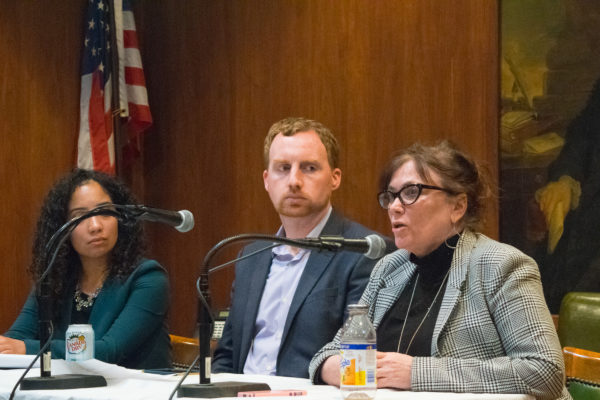Bail reform is a hot topic between defense attorneys and prosecutors at KCCBA meeting

Bail reform has become a hot topic nationally, especially since California outlawed cash bail a year ago, and the Kings County Criminal Bar Association became ground zero for that discussion when it hosted a continuing legal education program titled, “Bail Reform: Bail Alternatives and the New Felony Arraignment Part” at its monthly meeting on Remsen Street last Thursday.
The panel for the discussion consisted of Krystal Rodriguez, the associate director of jail reform for the Center for Court Innovation; Brian Crow, the deputy director of the Justice Division of the NYC Council; and Assistant District Attorney Janet Gleeson, bureau chief of the Orange Zone Trial Bureau at the Brooklyn DA’s Office.

“The KCCBA supports all attempts to make the system of bail more just and fair,” said President Christopher Wright. “The City Council and state legislature are both pursuing meaningful bail reform and we eagerly await their proposals. Brooklyn has already made important steps in reducing its contribution to the city’s jail population.”

Brooklyn Boro
View MoreNew York City’s most populous borough, Brooklyn, is home to nearly 2.6 million residents. If Brooklyn were an independent city it would be the fourth largest city in the United States. While Brooklyn has become the epitome of ‘cool and hip’ in recent years, for those that were born here, raised families here and improved communities over the years, Brooklyn has never been ‘uncool’.